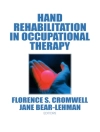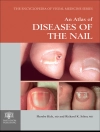The second of a multi-volume set takes into account the deficit of experience and knowledge gained from 3D preoperative planning and postoperative control using new radiological protocols in surgical procedures, with corresponding consequences. It contrasts the established standard techniques of orthognathic oral and maxillofacial surgery with alternatives that are based on years of experience and knowledge gained from better radiological analysis. Orthopaedic oral and maxillofacial surgery has experienced a renaissance in recent years, primarily due to three-dimensional radiological imaging.
The book has deliberately been structured in such a way that the clinical situation is contrasted with a graphic representation for better understanding, which is intended to point out special situations that can in turn positively influence the surgical planning of the intervention in order to avoid undesirable results in the individual case. The book will have a reduced text part, but witha lot of illustrations, in order to show the surgeon, who works image-oriented, the logic of the surgical procedure in a simple and clear way. The graphic illustrations will illustrate the three-dimensionality of the complex anatomy in the midface region close to the orbits and the skull base. Illustrations must help where radiological images fall short. The structure of the book will nevertheless be classic, as the variations of the established techniques can only be understood on the basis of historical development.
A corresponding textbook that combines clinical situations with pre- and postoperative radiological evaluation and graphic explanation does not exist to date. It will appeal to a broad readership of students and professionals working within Oral and Maxillofacial Surgery, Orthodontics, Plastic and Craniofacial Surgery, and Otorhinolaryngology.
قائمة المحتويات
I. Introduction to Orthognathic Surgery in the Maxilla/Midface.- Chapter 1. Classification and Facial Patterns in Dysgnathias of the Maxilla and Midface.- Chapter 2. Types of Osteotomies in the Maxilla.- Chapter 3. Definition of Standard Indications and Surgical Procedures.- II. Osteotomies in the Maxilla and Midface.- Chapter 4. Segmental Osteotomies in the maxilla.- Chapter 5. Development of Le Fort I Osteotomies.- Chapter 6. Le Fort II osteotomy.- Chapter 7. Le Fort III and frontal monobloc osteotomies.- Chapter 8. Immediate and Late Complications after Midface Osteotomies.- III. Osteotomies in the Maxilla/Midface – General Planning.- Chapter 9. Pre- and Perioperative Care in Orthognathic Surgery – Anesthesiology and CMF-Surgery.- Chapter 10. Patient and Data Acquisition.- Chapter 11. General Planning and Preoperative Assessment.- Chapter 12. Preparations for the Surgical Procedure.- Chapter 13. Postoperative Care in Orthognathic Surgery.- IV. Le Fort Osteotomies in the Maxilla/Midface.- Chapter 14. Clinical Anatomy and the Le Fort – Osteotomies.- Chapter 15. Anatomical Reference Points – Indispensable Aids.- Chapter 16. General Rules in Le Fort Osteotomies – six steps.- Chapter 17. Intraoperative Hazards and Risks.- Chapter 18. Complication Prevention and Care after Midface Osteotomies.- V. Distraction Osteogenesis in the Midface and Maxilla.- Chapter 19. Distraction Osteogenesis in the Midface and Maxilla.- VI. Anterior Maxillary Osteotomy – AMO – Anatomical, Technical and Surgical Aspects.- Chapter 20. Anatomical Aspects.- Chapter 21. AMO – Technical Aspects.- Chapter 22. AMO – Method, Principles and Limitations.- Chapter 23. AMO – Wassmund Technique.- Chapter 24. Wunderer Technique – 1963.- Chapter 25. Anterior Maxillary Down-fracture Techniques – Cupar 1954, Bell 1971, 1977 and Epker 1977.- Chapter 26. Anterior Maxillary Osteotomy – Management after Surgery – Postoperative Care.- Chapter 27. Intraoperative Hazards and Risks – Danger Points – Complicationsof AMO.- Chapter 28. Variants of AMO.- VII. Posterior Maxillary Osteotomy – PMO – Anatomical, Technical and Surgical Aspects.- Chapter 29. Posterior Maxillary Segment Osteotomy – PMSO – Introduction.- Chapter 30. Posterior Maxillary Segment Osteotomy – PMSO – Indications.- Chapter 31. Posterior Maxillary Segment Osteotomy – PMSO – Step-by-step Procedure.- Chapter 32. Posterior Maxillary Segment Osteotomy – PMSO – Reference and Danger Points.- Chapter 33. Posterior Maxillary Segment Osteotomy – PMSO – Rules and Tricks.- Chapter 34. Posterior Maxillary Segment Osteotomy – PMSO – Complications.
عن المؤلف
Peter A. Kessler is Professor and Head of the Department of Cranio-Maxillofacial Surgery, Maastricht University Medical Center (MUMC+), Maastricht, The Netherlands.Dr. Kessler completed his studies in dentistry and medicine at the Friedrich-Alexander-University of Erlangen-Nuremberg in 1986 and 1994 respectively (Prof. Dr. Emil Steinhäuser), where he habilitated in 2001. He qualified as Specialist in Oral and Maxillofacial Surgery in 1999 under Prof. Dr. F.W. Neukam and holds a qualification in plastic surgery (2003). From 1999 to 2001 he worked as a specialist at the Department of Oral and Maxillofacial Surgery, Friedrich-Alexander University Erlangen-Nuremberg, Erlangen (Prof. Dr. F.W.Neukam); he then became Senior Lecturer and Vice-Director at the clinic before taking up his current position in Maastricht in 2007.
Nicolas P. Hardt was Professor and Head of the Clinic for Cranio-Maxillofacial Surgery, Kantonsspital, Lucerne (LUKS), Switzerland from 1974until 2007. Dr. Hardt graduated in Dentistry and Medicine at the University of Bonn, Germany, and subsequently completed a residency at the Clinic for Cranio-Maxillofacial Surgery in Bonn (Prof. Dr. Eberhard Krüger). In 1970 he was appointed Senior Assistant in the Clinic for Cranio-Maxillofacial Surgery at the University of Berne in Switzerland (Prof. Dr. Otto Neuner). In 1973 he was visiting maxillo-facial Surgeon in the Centre for Cranio-Maxillofacial Surgery / Queen Mary’s-Hospital – Roehampton/London (Sir Norman Rowe). He then qualified by Prof. Dr. Emil Steinhäuser (Erlangen/Nürnberg) as a Specialist for Cranio-Maxillofacial Surgery in Switzerland (1974) and Germany (1975) and the EU (1979) and holds a qualification in Plastic Surgery (1980). Dr. Hardt completed his Habilitation by Prof. Dr. Hugo Obwegeser (University Clinic for Cranio-Maxillofacial Surgery of Zürich) in 1981 and became a Full Professor at the University of Zurich in 1990.
Kensuke Yamauchi is Professor and Head of the Department of Oral and Maxillofacial Reconstructive Surgery, Tohoku University, Sendai, Japan (Head: Prof. Tetsu Takahashi). Dr. Yamauchi graduated in Dentistry at Tohoku University in 2001 and completed a residency at the Kagawa Prefectural Central Hospital in Kagawa (Dr. Masaharu Mitsugi). He was appointed assistant professor at the Department of Oral and Maxillofacial Reconstructive Surgery of Kyushu Dental College (Prof. Tetsu Takahashi) until 2012. He also visited the Department of Cranio-Maxillofacial Surgery, Maastricht University Medical Center (Prof. Dr. Peter Kessler) from 2011 to 2012. He moved to the Department of Oral and Maxillofacial Surgery, Tohoku University (Prof. Tetsu Takahashi) in 2012, and became a Lecturer and Vice-Director of Dental Implant Center in 2013 and taking up his current position in Tohoku University in 2022.












